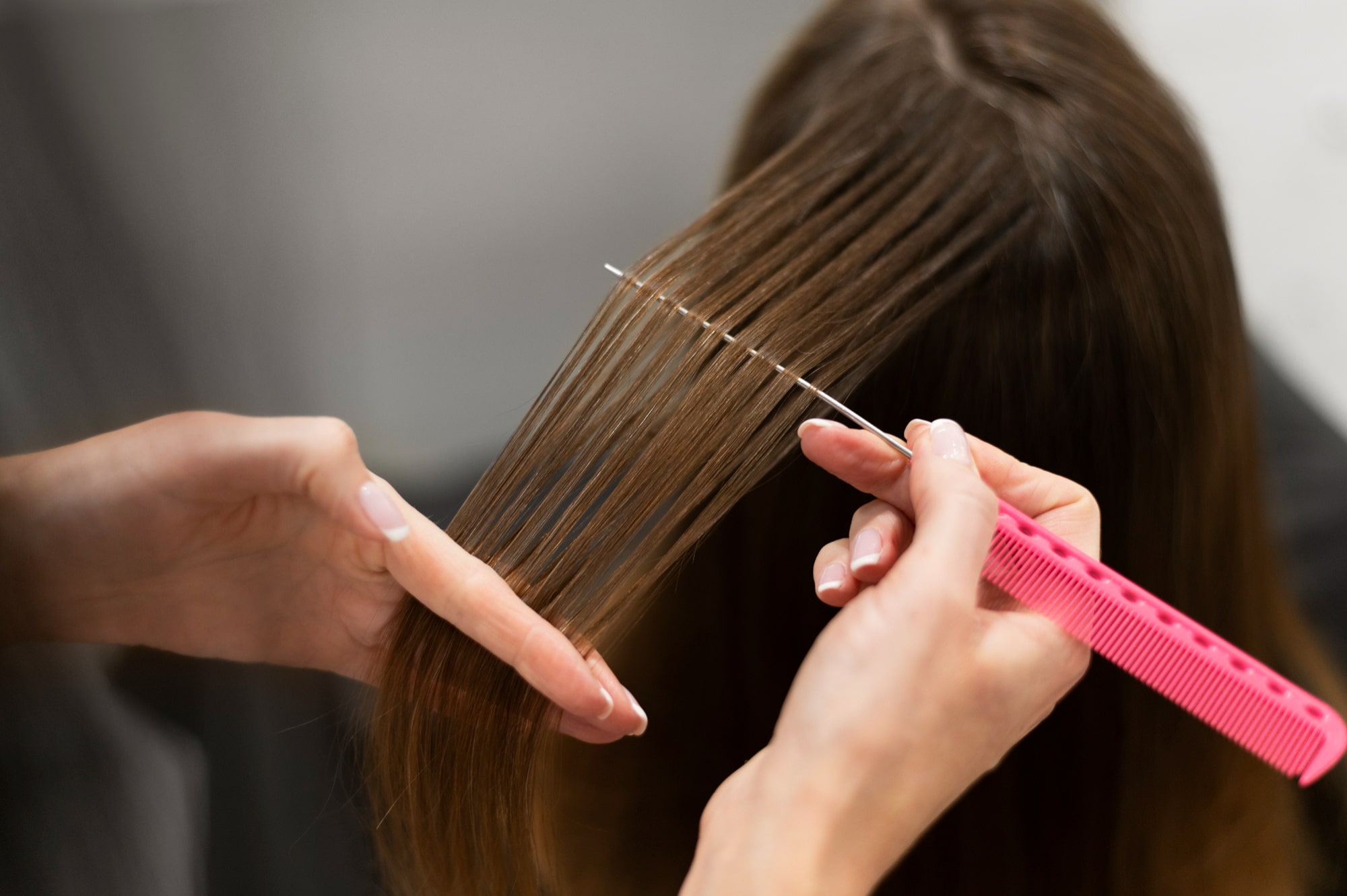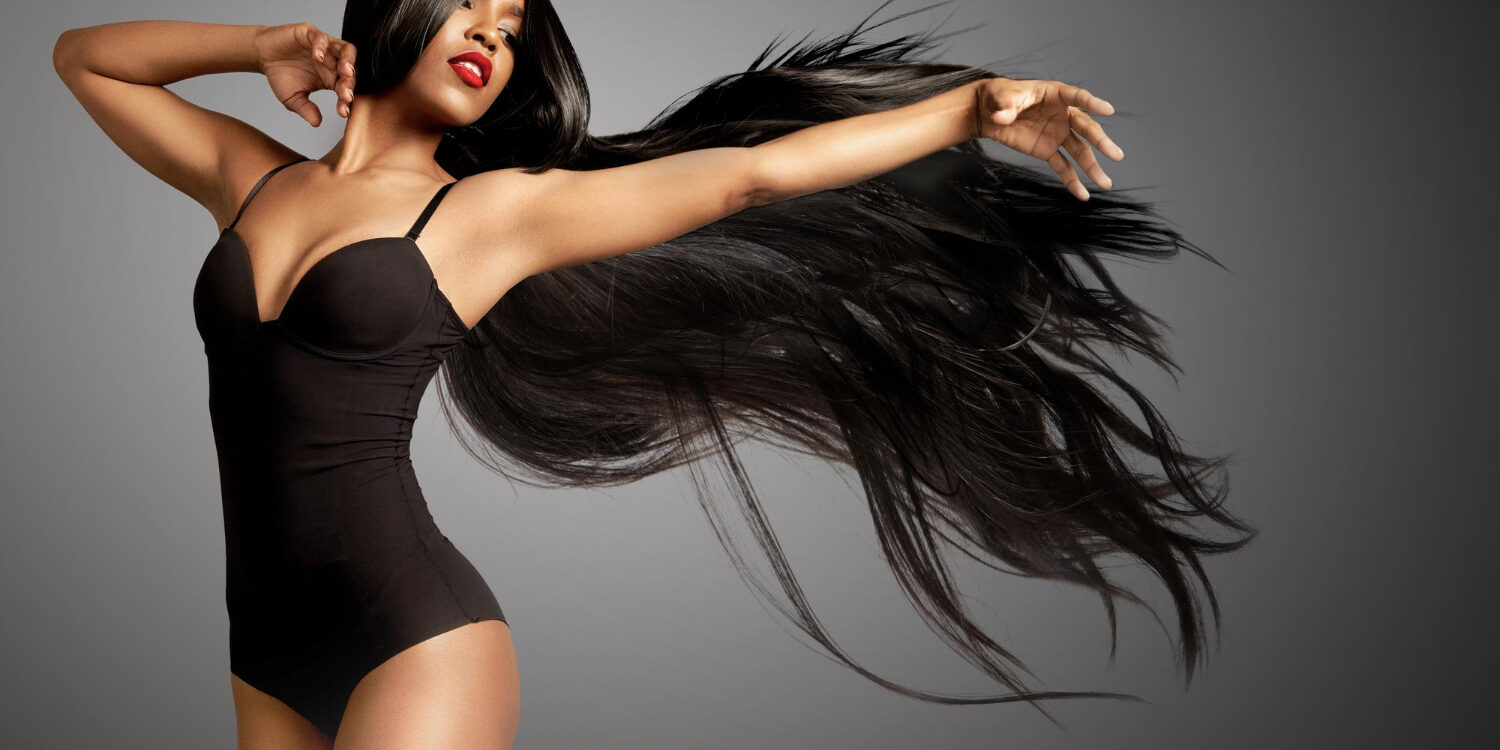Yes, if you go for high quality product and carefully handle the process, human hair extension are safe to use. Hair extensions have become a popular trend for individuals seeking to enhance their hair length, volume, or style. However, the safety of human hair extensions is a topic of concern for many. Let’s explore about “are human hair extensions safe” or if they pose potential risks.
Talking About The Quality of Hair Extensions
The safety of human hair extensions largely depends on the quality of the product. The tools and products used during the installation and maintenance of human hair extensions also play a role in safety. High-quality extension tools and hair care products contribute to a better overall experience. Inferior tools or products may damage the extensions or natural hair, leading to unwanted consequences.
The ethical sourcing of human hair is an important consideration for the safety of hair extensions. High-quality, ethically sourced human hair extensions are less likely to cause adverse effects as compared to low-quality or synthetic alternatives. Extensions that are made from genuine human hair, tend to look more natural and blend seamlessly with the wearer’s hair. Some unscrupulous suppliers may obtain hair through exploitative practices. Choosing extensions from reputable sources to ensure that the hair has been obtained responsibly and without causing harm to individuals in impoverished communities.
The Importance Of Hair Extensions Attachment Methods
The method used to attach human hair extensions also determines safety. Common attachment methods include tape-in, clip-in, sew-in, and fusion bonding. Improper application, excessive tension, or the use of low-quality adhesives can lead to damage, breakage, or even hair loss. Here is how improper attachement methods can ruin your hair
- Tape-in extensions involve attaching wefts of hair to small sections of natural hair using adhesive tape. This method is known for its quick application process but requires careful maintenance to prevent the tapes from slipping. Regular repositioning and the use of non-damaging tape are essential for the safety and effectiveness of tape-in extensions.
- Clip-in extensions are a temporary option using small clips. Proper placement and gentle handling of the clips prevent damage to the natural hair.
- Sew-in or weave extensions involve braiding the natural hair and sewing wefts of hair onto the braids. While this method provides a secure attachment, it’s important to avoid excessive tension during the braiding process. Regular maintenance, including tightening and repositioning, helps prevent stress on the natural hair.

- Fusion or bonded extensions use adhesive to attach individual strands of hair to small sections of natural hair. The bonding material is typically keratin or a thermoplastic substance. Careful application prevents excessive adhesive from causing damage. Professional removal is necessary to avoid breakage.
- Microbead or I-tip extensions involve attaching small bundles of hair to natural hair using tiny metal beads or rings. While this method offers a natural look, improper installation or over-tightening of the beads can lead to breakage and damage. Regular checks and adjustments are necessary to maintain the safety of microbead extensions.
- Cold fusion extensions use a keratin-based polymer to attach individual strands of hair to natural hair. Unlike hot fusion methods, cold fusion involves a gentler application process. However, professional installation is essential to ensure a secure and safe attachment without causing damage to the natural hair.
Its Important To Know About Allergic Reactions
Some individuals may experience allergic reactions to the materials used in the production of hair extensions or the adhesives used for attachment.Allergic reactions to the materials used in human hair extensions are not uncommon. Allergic reactions can be triggered by various components in extension materials, including adhesives, dyes, or coatings. Common allergens include latex, which may be present in some attachment methods, and certain metals found in clips or beads.
Human hair extensions are safe to use but before the full application of extensions, we recommend to conduct a patch test. This involves applying a small amount of the adhesive or extension material to a discreet area of the skin and monitoring for any signs of irritation, redness, or itching. A patch test helps identify potential allergic reactions before a widespread application occurs.
Opting for hypoallergenic extension materials can help minimize the risk of allergic reactions. Hypoallergenic adhesives, clips, and other accessories are designed to be less likely to cause irritation, making them a safer choice for individuals with sensitive skin.
It’s crucial to be aware of the symptoms of allergic reactions. They may include redness, itching, swelling, or rash. If any of these symptoms occur, immediate action should be taken, and the extensions should be removed. Prolonged exposure to allergens can exacerbate symptoms and lead to more severe reactions.
Know that prolonged use of tight or heavy hair extensions can contribute to traction alopecia, a condition characterized by hair loss due to constant tension on the hair shafts. Choosing lightweight extensions and allowing the natural hair to rest between applications can help mitigate this risk.
Maintenance and Care For Human Hair Extensions

- Proper maintenance and care ensures the safety of human hair extensions. Failure to follow care practices, such as using suitable products, avoiding excessive heat, and gentle detangling, can lead to damage to both the extensions and the natural hair.
- Also, inadequate hygiene practices related to the care and maintenance of hair extensions can lead to scalp issues, including fungal infections and irritation. So regular washing and proper drying of both the natural hair and the extensions are essential to prevent hygiene-related complications.
- Individuals with pre-existing hair or scalp conditions should exercise caution when using hair extensions. Conditions such as alopecia, dermatitis, or a sensitive scalp may aggravate by certain attachment methods or the weight of the extensions. Consultation with a dermatologist or trichologist before getting extensions can help assess potential risks.
- Active individuals may need to take extra precautions to prevent tangling or stress on the extensions. Additionally, exposure to elements like sun, wind, and water can impact the longevity and appearance of the extensions.
- Before going for extensions, learn about proper washing, detangling, and styling techniques, as well as recognizing signs of potential problems that may require professional attention.
Removal Process
The safe removal of hair extensions is as important as the attachment process. Rushed or improper removal can cause hair breakage and damage. It is advisable to have extensions removed by a professional stylist who understands the correct procedures and uses appropriate products to minimize the risk of hair and scalp damage.
So are human hair extensions safe to use? Yes, if you will go for proper installation process, follow proper guidelines and maintain your hair well, they are totally safe.








